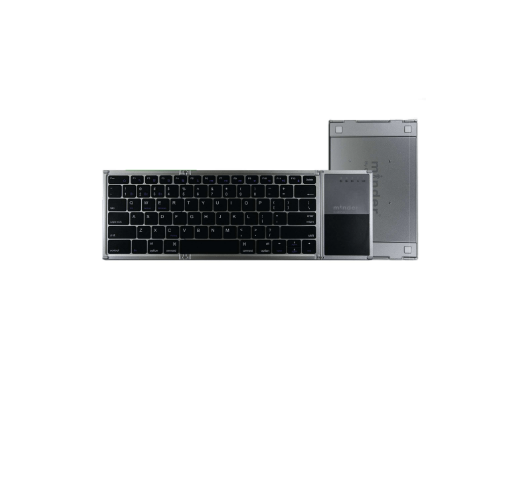June 12, 2023
Decoding The Taste Trap: Processed Foods
Decoding The Taste Trap: Processed Foods
By Lauren O’Brien Mbae MBA NBC-HWC
Next time you crunch into a potato chip, take note of the senses you experience. It’s more than just taste. The crinkle of the bag, the burst of smell when the bag opens, and then reaching in and grabbing a chip, (maybe even slight excitement when a “good” chip is picked). That first bite is crunchy, crispy, salty, thin, a little greasy but still light…and it all hits your taste buds in one explosion of senses. It’s not just a party on your tongue though; your brain is lighting up like the sky on the Fourth of July. It’s so easy to accidentally eat more than you planned. Well, food scientists intentionally design processed foods so all of the senses are hit. Then the right combination of salt, sugar, and fat hits the brain’s reward system like a freight train.
Salt, sugar, and fat are key players of team ”Taste Trap” – powerful ingredients that help food scientists make processed and prepared foods what they are.
Salt: Salt’s superpower is the “Flavor Enhancer.” It heightens the taste of other ingredients and balances flavors, even being able to mask unpleasant tastes and increase the palatability of processed foods. It is also a big contributor to the preservation of food by inhibiting bacterial growth and extending shelf life.1
Sugar: Unsurprisingly, sugar’s superpower is “Sweetness.” Besides helping foods taste good, sweetness can help to counterbalance the bitterness or acidity of certain ingredients. It also contributes to the texture and mouthfeel of the food item. Sugar can enhance flavors through caramelization. And, like salt, sugar helps delay spoilage by preventing bacteria growth.2
Fat: Fat helps end the show with a bang. Fat’s superpower is the “Satisfaction Transporter.” Fat is able to carry and release flavors, distributing the flavors evenly throughout the food, ensuring as much contact as possible with the tongue. Fat is able to dissolve, concentrating flavors and odor chemicals, which are then released into the air when cooked. Flavor molecules make their way into the nose before the food even hits the mouth…think bacon cooking or McDonalds! Fats also help improve the texture and sensory appeal by contributing a rich, creamy, and smooth texture to foods. 3
The three above are teammates, each contributing differently to the team of “Processed Foods.” The biggest fan of the team is the brain. The brain is particularly sensitive to and uniquely reacts to processed foods compared to unprocessed foods. In fact, the brain has a greater impact on our hunger than the physical feeling of a rumbly tummy.
In the book “Hooked,” Michael Moss discusses a study performed by PhD student, Roy Wise, at McGill University in Montreal. He conducted research on rats to see how much the brain influences hunger. He found that he was able to completely control their sense of hunger simply through sending jolts of electricity to certain parts of the brain, known as the reward center.4 Salt, sugar, and fat evoke the same response from the brain as the electricity in the study. Sugar is the olympian of the three, getting to the brain the fastest. Fat and salt hold hands as they cross the finish line; still incredibly fast, but they don’t win gold. And the brain’s reward system celebrates just like fans in the stadium.4
The food scientists know your brain likes the above three teammates. And, they make sure to capitalize on it. Moss uncovered just how meticulous the food scientists are when creating processed foods.4 Their number one goal is to have that first bite light up the brain’s reward system like a christmas tree. And, it doesn’t stop there. Then your brain remembers that fantastical sensory-rich experience and wants a repeat. Those chips were scientifically designed to, hopefully, be so delicious that the experience gets pinned on the brain’s memory board. Do you ever crave certain foods during certain events, emotions, or weather? Your brain probably attached an association from the past.
Hitting the brain’s reward system makes you want more. Then, add in those fun sensory experiences mentioned above and it becomes pretty easy to overconsume. Processed foods are low in nutrients and scientifically designed to not fill you up. A study conducted by researchers at the NIH’s National Institute of Diabetes and Digestive and Kidney Diseases (NIDDK) examined the effects of ultra-processed foods (i.e. foods containing ingredients like hydrogenated oils, high-fructose corn syrup, or flavoring agents). The results showed that ultra-processed foods cause people to eat too many calories and gain weight. Participants were also found to have eaten faster than those on the unprocessed foods diet.5 What would be easier to eat in one sitting: a bag of chips or two whole watermelons?
Completely cutting out processed foods from your diet can be difficult, especially given the abundance. Here are some small steps to take to slowly remove processed foods from your daily diet:
Switch refined grains for whole grains. Instead of a flour tortilla, choose the whole wheat option.
Gradually cut down on sugary drinks like soda, fruit juice, sports drinks, sweet tea, and all those fancy Starbucks drinks. Drink more water!
Ease access to healthy options: Sometimes we need something NOW or we’re running out the door and need something for the car. Keeping healthy options that are easy to grab-and-go will make it more likely for you to grab when running out the door.
Meal prepping: This doesn’t have to mean cooking all day Sunday and eating the same thing for lunch every day. It can mean having lots of fresh vegetables and fruit chopped up so when you’re ready to make something, it’s easier to throw together.
Salt, sugar and fat aren’t bad guys. In fact, they’re key ingredients in a balanced, healthy diet, but our bodies prefer the nutrients in an unprocessed form. Fruit, vegetables, and dairy products are unprocessed and contain sugar. And, foods like avocado, eggs, olives, olive oil, fatty fish, and coconut are all examples of unprocessed fatty foods. Next time you reach for a snack, take a second to decode where it came from. If it’s shelf-stable, it was probably carefully created in a lab to leave you wanting more. And remember, if we are what we eat, don’t be fast, easy or cheap!
Sources:
[1] National Academies Press (US). (2010). Taste and Flavor Roles of Sodium in Foods: A Unique Challenge to Reducing Sodium Intake. Strategies to Reduce Sodium Intake in the United States - NCBI Bookshelf. https://www.ncbi.nlm.nih.gov/books/NBK50958/
[2] Roles Sugar Plays in Foods - The Canadian Sugar Institute. (n.d.). https://sugar.ca/sugar-basics/roles-sugar-plays-in-foods
[3] Breitman, D. (2017). Why do fatty foods taste so good? | Human World | EarthSky. EarthSky | Updates on Your Cosmos and World. https://earthsky.org/human-world/why-do-fatty-foods-taste-so-good-2/#:~:text=Fats%20help%20you%20enjoy%20the,in%20your%20nose%20and%20mouth
[4] Moss, Michael. (2021). Hooked. Penguin Random House.
[5] NIH study finds heavily processed foods cause overeating and weight. (2019, June 17). National Institutes of Health (NIH). https://www.nih.gov/news-events/news-releases/nih-study-finds-heavily-processed-foods-cause-overeating-weight-gain
Write or copy/paste Liquid code
Emp
Begin the journey to improving your posture, breathing, and overall wellness with the help of obVus. Our expertly designed live well and work well products are made to fit into your life with minimal effort needed.

Ergonomic Accessories

minder
App

Blog
Learn more
about wellness
and mindful living






